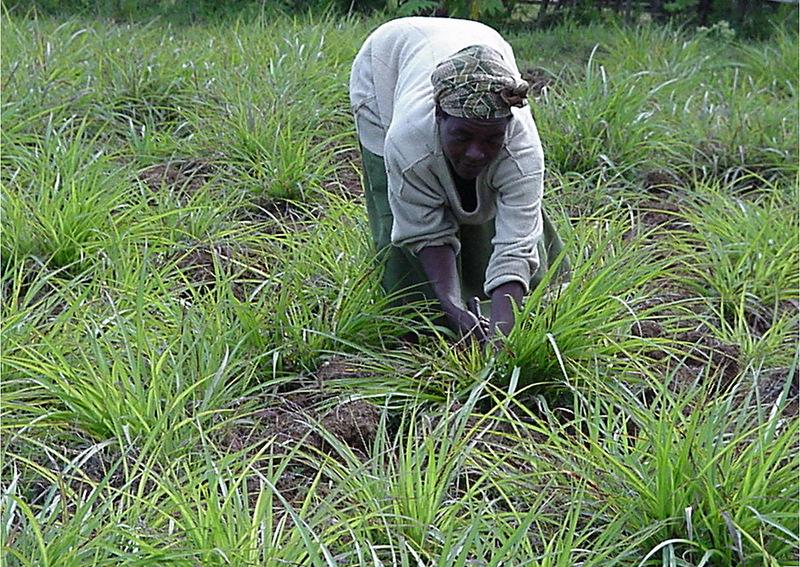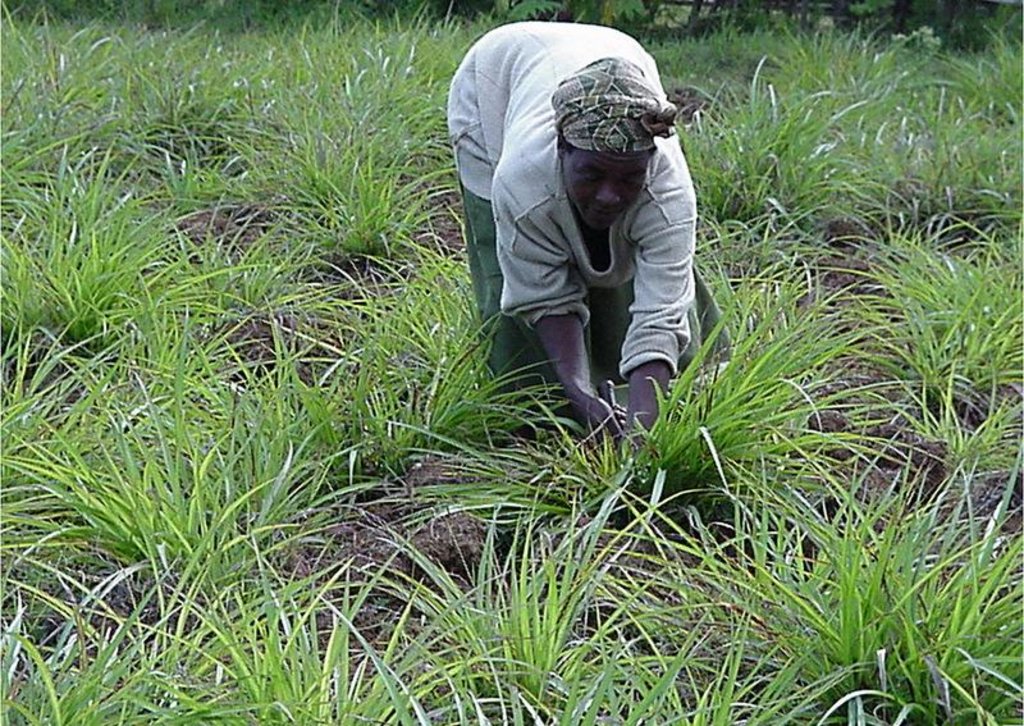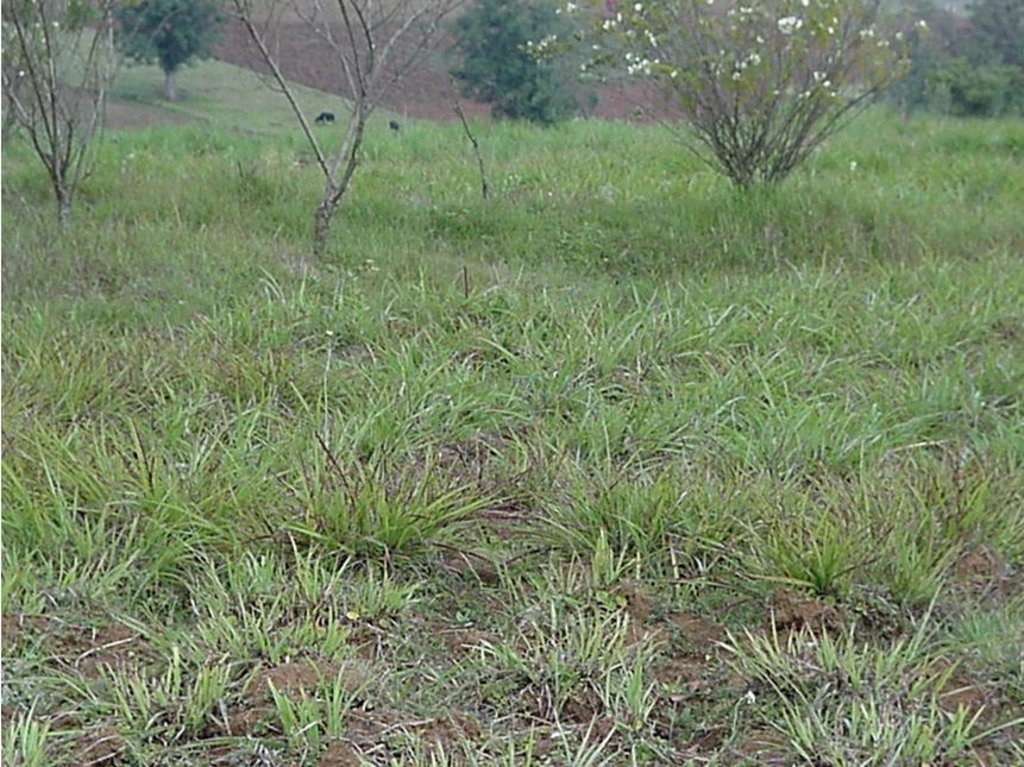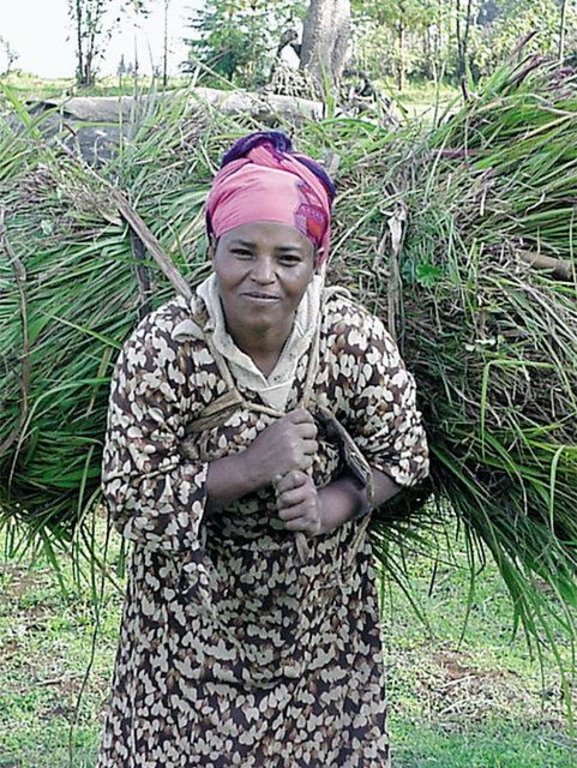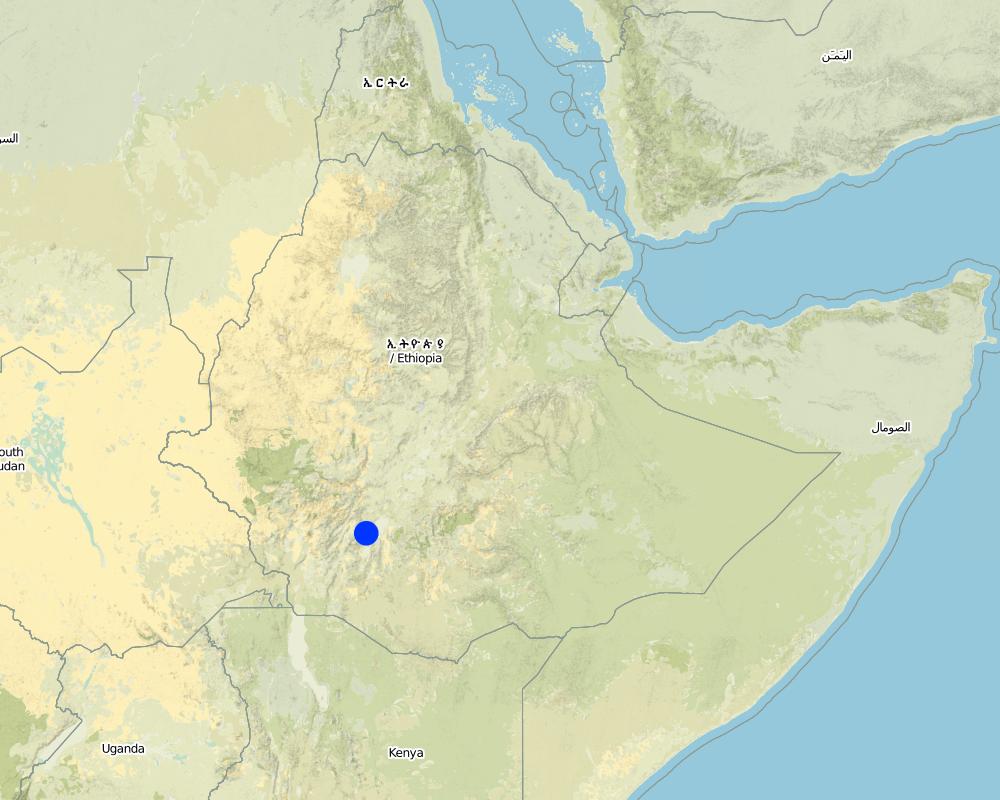Amélioration des pâturages [Ethiopia]
- Creation:
- Update:
- Compiler: Julie Zähringer
- Editor: –
- Reviewers: Alexandra Gavilano, Fabian Ottiger
technologies_954 - Ethiopia
View sections
Expand all Collapse all1. General information
1.2 Contact details of resource persons and institutions involved in the assessment and documentation of the Technology
SLM specialist:
SLM specialist:
Ethiopia
Name of project which facilitated the documentation/ evaluation of the Technology (if relevant)
Book project: SLM in Practice - Guidelines and Best Practices for Sub-Saharan Africa (SLM in Practice)Name of the institution(s) which facilitated the documentation/ evaluation of the Technology (if relevant)
Food and Agriculture Organization of the United Nations (FAO) - ItalyName of the institution(s) which facilitated the documentation/ evaluation of the Technology (if relevant)
SNNPR Bureau of Agriculture - Ethiopia1.3 Conditions regarding the use of data documented through WOCAT
The compiler and key resource person(s) accept the conditions regarding the use of data documented through WOCAT:
Ja
2. Description of the SLM Technology
2.1 Short description of the Technology
Definition of the Technology:
L’amélioration des pâturages est fondée sur les clôtures et sur la plantation d’espèces améliorées de fourrages herbacés et ligneux dans le but d’améliorer la production fourragère et par conséquent l'élevage tout en contrôlant simultanément la dégradation des terres.
2.2 Detailed description of the Technology
Description:
Cette étude de cas se concentre sur les hautes terres humides à forte densité de population d’Éthiopie, là où les petites surfaces restantes de pâturages sont surexploitées et sous une pression énorme.
La technologie implique une combinaison de mesures de gestion, de mesures agronomiques et végétales : l’installation de clôtures pour interdire l'accès ouvert, l'application de compost pour améliorer la fertilité des sols, la plantation d’espèces fourragères améliorées locales et exotiques, y compris les légumineuses arbustives et arborées à usages multiples (incluant les espèces fixatrices d'azote) et l'herbe locale Desho (Pennisetum pedicellatum). L’herbe Desho a une valeur nutritive élevée et permet des coupes régulières. Celle-ci est plantée par division des touffes, ce qui permet des taux de survie élevés et une meilleure mise en place par rapport à des herbes semées. D’autres graines de graminées et de légumineuses sont mélangées aux graines d'arbres fourragers et sont ainsi semées à la volée. Les légumineuses sont la luzerne (Medicago sativa) et les trèfles dans certains cas. La zone est fermée et protégée de façon permanente du bétail. Le fourrage est coupé et transporté pour une alimentation en stabulation (affouragement en vert) et une fois par an, l'herbe est coupée pour le foin, qui est alors stocké pour nourrir les animaux pendant la saison sèche.
Dans la zone d'étude, les pâturages collectifs clôturés et protégés ont été divisés en petites parcelles (<0,5 ha) et distribués aux exploitants individuels pour qu’ils coupent les foins, comme une incitation pour stimuler la bonne gestion. Le gouvernement fournit une formation, une assistance technique, un suivi rapproché et certains intrants pour la mise en place initiale.
2.3 Photos of the Technology
2.5 Country/ region/ locations where the Technology has been applied and which are covered by this assessment
Country:
Ethiopia
Region/ State/ Province:
Southern Nation and Nationalities and Peoples Region
Further specification of location:
Chencha
Map
×2.7 Introduction of the Technology
Specify how the Technology was introduced:
- through projects/ external interventions
3. Classification of the SLM Technology
3.1 Main purpose(s) of the Technology
- improve production
3.2 Current land use type(s) where the Technology is applied

Grazing land

Mixed (crops/ grazing/ trees), incl. agroforestry
- Silvo-pastoralism
Comments:
Major land use problems (land users’ perception): Erosion hydrique du sol; déclin de la fertilité
Semi-nomadism / pastoralism: Yes
Future (final) land use (after implementation of SLM Technology): Mixed: Ms: Silvo-pastoralism
If land use has changed due to the implementation of the Technology, indicate land use before implementation of the Technology:
Grazing land: Ge: Extensive grazing land
3.3 Further information about land use
Water supply for the land on which the Technology is applied:
- rainfed
Number of growing seasons per year:
- 2
Specify:
Longest growing period in days: 230
Longest growing period from month to month: Aug-Feb
Second longest growing period in days: 150
Second longest growing period from month to month: Mar-Jul
3.4 SLM group to which the Technology belongs
- minimal soil disturbance
3.5 Spread of the Technology
Comments:
Total area covered by the SLM Technology is 20 m2.
3.6 SLM measures comprising the Technology

agronomic measures
- A2: Organic matter/ soil fertility

vegetative measures
- V2: Grasses and perennial herbaceous plants

management measures
- M2: Change of management/ intensity level
Comments:
Main measures: agronomic measures, vegetative measures, management measures
Type of agronomic measures: fumier / compost / résidus
Type of vegetative measures: dispersées / éparpillées
3.7 Main types of land degradation addressed by the Technology

soil erosion by water
- Wt: loss of topsoil/ surface erosion

soil erosion by wind
- Et: loss of topsoil

chemical soil deterioration
- Cn: fertility decline and reduced organic matter content (not caused by erosion)

biological degradation
- Bc: reduction of vegetation cover
- Bs: quality and species composition/ diversity decline
Comments:
Main type of degradation addressed: Wt: perte du sol de surface par l’eau, Et: perte du sol de surface, Cn: baisse de la fertilité du sol et du niveau de matière organique, Bc: réduction de la couverture végétale, Bs: baisse de la qualité et de la composition / diversité des espèces
Main causes of degradation: surpâturage
3.8 Prevention, reduction, or restoration of land degradation
Specify the goal of the Technology with regard to land degradation:
- restore/ rehabilitate severely degraded land
Comments:
Main goals: rehabilitation / reclamation of denuded land
4. Technical specifications, implementation activities, inputs, and costs
4.2 Technical specifications/ explanations of technical drawing
Technical knowledge required for field staff / advisors: fort
Technical knowledge required for land users: moyen
Main technical functions: amélioration de la couverture du sol, augmentation de la matière organique, augmentation de la disponibilité des nutriments (réserve, recyclage, …), augmentation de la biomasse (quantité), développement des espèces végétales et de la variété (qualité, ex: fourrage appétent)
Scattered / dispersed
Vegetative material: C: cultures pérennes
Change of land use practices / intensity level: clôturer
4.3 General information regarding the calculation of inputs and costs
Indicate average wage cost of hired labour per day:
0.70
4.4 Establishment activities
| Activity | Type of measure | Timing | |
|---|---|---|---|
| 1. | 3. Préparer les jeunes plants en pépinières (division des touffes, semis des arbres) | Vegetative | None |
| 2. | 4. Préparer le lit de semence (houe à main, en partie charrue à bœuf) | Management | None |
| 3. | 6. Planter les herbes divisées et les espèces d’arbustes / arbres en ligne et sur les diguettes de conservation ; semer les graines des graminées à la volée | au début de la saison des pluies | |
| 4. | 1. Délimiter la zone à protéger et mettre en place une clôture (bois mort) | ||
| 5. | 2. Diviser la zone protégée (collective) en parcelles individuelles de 0.3-0.5 ha |
4.5 Costs and inputs needed for establishment
| Specify input | Unit | Quantity | Costs per Unit | Total costs per input | % of costs borne by land users | |
|---|---|---|---|---|---|---|
| Labour | None | None | 1.0 | 320.0 | 320.0 | 56.0 |
| Equipment | None | None | 1.0 | 22.0 | 22.0 | 56.0 |
| Plant material | None | None | 1.0 | 710.0 | 710.0 | 56.0 |
| Total costs for establishment of the Technology | 1052.0 | |||||
4.6 Maintenance/ recurrent activities
| Activity | Type of measure | Timing/ frequency | |
|---|---|---|---|
| 1. | Couper et transporter herbes et feuilles, pour nourrir les animaux en stabulation | Agronomic | après 2-3 mois de croissance, pendant la saison des pluies, fin août |
| 2. | Faire une dernière coupe pour les foins au début de la saison sèche (fin octobre), quand l’herbe est bien mature | Management | début de la saison sèche (fin octobre) |
| 3. | Sarcler | Vegetative | |
| 4. | Plantation d’enrichissement, combler les trous (1 fois par an), associé à l’application de compost / fumier (mélangé à de la terre) | Management | 1 fois par an |
4.7 Costs and inputs needed for maintenance/ recurrent activities (per year)
| Specify input | Unit | Quantity | Costs per Unit | Total costs per input | % of costs borne by land users | |
|---|---|---|---|---|---|---|
| Labour | None | None | 1.0 | 35.0 | 35.0 | 100.0 |
| Equipment | None | None | 1.0 | 4.0 | 4.0 | 100.0 |
| Plant material | None | None | 1.0 | 87.0 | 87.0 | 100.0 |
| Total costs for maintenance of the Technology | 126.0 | |||||
4.8 Most important factors affecting the costs
Describe the most determinate factors affecting the costs:
Les semences sont donnés par le gouvernement pour la mise en place initiale. Pour l’extension de la surface et la replantation, les exploitants ont créé leurs propres pépinières. Après 2–3 ans, les coûts d’entretien diminuent de façon significative puisque la couverture herbacée se referme et les activités d’entretien (replantation, application de compost) sont réduites ou cessent
5. Natural and human environment
5.1 Climate
Annual rainfall
- < 250 mm
- 251-500 mm
- 501-750 mm
- 751-1,000 mm
- 1,001-1,500 mm
- 1,501-2,000 mm
- 2,001-3,000 mm
- 3,001-4,000 mm
- > 4,000 mm
Specify average annual rainfall (if known), in mm:
1100.00
Agro-climatic zone
- humid
Thermal climate class: tropics
5.2 Topography
Slopes on average:
- flat (0-2%)
- gentle (3-5%)
- moderate (6-10%)
- rolling (11-15%)
- hilly (16-30%)
- steep (31-60%)
- very steep (>60%)
Landforms:
- plateau/plains
- ridges
- mountain slopes
- hill slopes
- footslopes
- valley floors
Altitudinal zone:
- 0-100 m a.s.l.
- 101-500 m a.s.l.
- 501-1,000 m a.s.l.
- 1,001-1,500 m a.s.l.
- 1,501-2,000 m a.s.l.
- 2,001-2,500 m a.s.l.
- 2,501-3,000 m a.s.l.
- 3,001-4,000 m a.s.l.
- > 4,000 m a.s.l.
5.3 Soils
Soil depth on average:
- very shallow (0-20 cm)
- shallow (21-50 cm)
- moderately deep (51-80 cm)
- deep (81-120 cm)
- very deep (> 120 cm)
Soil texture (topsoil):
- medium (loamy, silty)
- fine/ heavy (clay)
Topsoil organic matter:
- medium (1-3%)
- low (<1%)
5.6 Characteristics of land users applying the Technology
Market orientation of production system:
- subsistence (self-supply)
Off-farm income:
- 10-50% of all income
Relative level of wealth:
- very poor
- poor
Individuals or groups:
- individual/ household
Level of mechanization:
- manual work
Indicate other relevant characteristics of the land users:
Population density: 200-500 persons/km2
Annual population growth: 3% - 4%
and own 10% of the land (10).
and own 65% of the land (65).
and own 25% of the land (25).
Off-farm income specification: environs 50%
5.7 Average area of land owned or leased by land users applying the Technology
- < 0.5 ha
- 0.5-1 ha
- 1-2 ha
- 2-5 ha
- 5-15 ha
- 15-50 ha
- 50-100 ha
- 100-500 ha
- 500-1,000 ha
- 1,000-10,000 ha
- > 10,000 ha
Is this considered small-, medium- or large-scale (referring to local context)?
- small-scale
Comments:
Average area of land owned or leased by land users applying the Technology: < 0.5 ha, < 0.5 ha, 0.5-1 ha
5.8 Land ownership, land use rights, and water use rights
Land ownership:
- state
Land use rights:
- open access (unorganized)
- individual
Comments:
terres cultivées en individuel, pâturages en accès ouvert généralement (utilisés collectivement), sauf la zone d’étude de cas où les droits des pâturages réhabilités sont donnés à des individuels
6. Impacts and concluding statements
6.1 On-site impacts the Technology has shown
Socio-economic impacts
Production
fodder production
fodder quality
wood production
Income and costs
farm income
Socio-cultural impacts
health situation
community institutions
national institutions
SLM/ land degradation knowledge
Ecological impacts
Soil
soil moisture
soil cover
soil loss
nutrient cycling/ recharge
Biodiversity: vegetation, animals
plant diversity
Other ecological impacts
6.2 Off-site impacts the Technology has shown
downstream flooding
downstream siltation
wind transported sediments
6.3 Exposure and sensitivity of the Technology to gradual climate change and climate-related extremes/ disasters (as perceived by land users)
Climate-related extremes (disasters)
Meteorological disasters
| How does the Technology cope with it? | |
|---|---|
| local rainstorm | well |
Comments:
Tolérance aux pluies de forte intensité, aux orages
6.4 Cost-benefit analysis
How do the benefits compare with the establishment costs (from land users’ perspective)?
Short-term returns:
slightly positive
Long-term returns:
very positive
How do the benefits compare with the maintenance/ recurrent costs (from land users' perspective)?
Short-term returns:
positive
Long-term returns:
very positive
Comments:
La production de lait com-pense certains coûts élevés d’investis-sement (avant, la production était faible)
6.5 Adoption of the Technology
Of all those who have adopted the Technology, how many have did so spontaneously, i.e. without receiving any material incentives/ payments?
- 0-10%
Comments:
50 land user families have adopted the Technology with external material support
Comments on acceptance with external material support: Les 50 ménages qui ont accepté la technologie dans sa phase initiale, l
There is a strong trend towards spontaneous adoption of the Technology
Comments on adoption trend: Le taux d adoption spontanée est très élevé. À l heure actuelle, plus de 500 ménages ont adopté la technologie et la superficie totale couverte est d'environ 20 km2
6.7 Strengths/ advantages/ opportunities of the Technology
| Strengths/ advantages/ opportunities in the land user’s view |
|---|
|
Augmentation de la production du cheptel et du lait How can they be sustained / enhanced? extension appropriée |
| Strengths/ advantages/ opportunities in the compiler’s or other key resource person’s view |
|---|
|
La technologie montre une possibilité aux paysans pour améliorer la production du fourage How can they be sustained / enhanced? entrainement continu et suivi |
| Introduction des espèces herbacées donnant un rendement de biomasse augmenté |
| Avec l augmentation de production de fourage, la production du cheptel a augmenté simultanément |
6.8 Weaknesses/ disadvantages/ risks of the Technology and ways of overcoming them
| Weaknesses/ disadvantages/ risks in the land user’s view | How can they be overcome? |
|---|---|
| La phase initiale de mise en place exige une main d’œuvre intensive | utiliser des méthodes améliorées de préparation du sol (labour avec des bœufs, p.ex.). |
| C’est une technologie coûteuse (disponibilité de trésorerie pour les intrants, en particulier les semis) | produire des plants d espèces améliorées et du compost dans les jardins. |
| Besoin d’une application importante d’engrais | se concentrer surtout sur les engrais organiques |
| Forte pression sur les pâturages restants | garder les animaux en stabulation (étable) ou en parc, au moins une partie de la journée et pendant la nuit et introduire plus largement l’affouragement en vert |
7. References and links
7.2 References to available publications
Title, author, year, ISBN:
Adane Dinku, Chencha Wereda, Natural Resources Management Annual Report, 2001 and 2002; Danano, D (2008, unpublished): Soil and Water Conservation Practices for Sustainable Land Management
Links and modules
Expand all Collapse allLinks
No links
Modules
No modules


